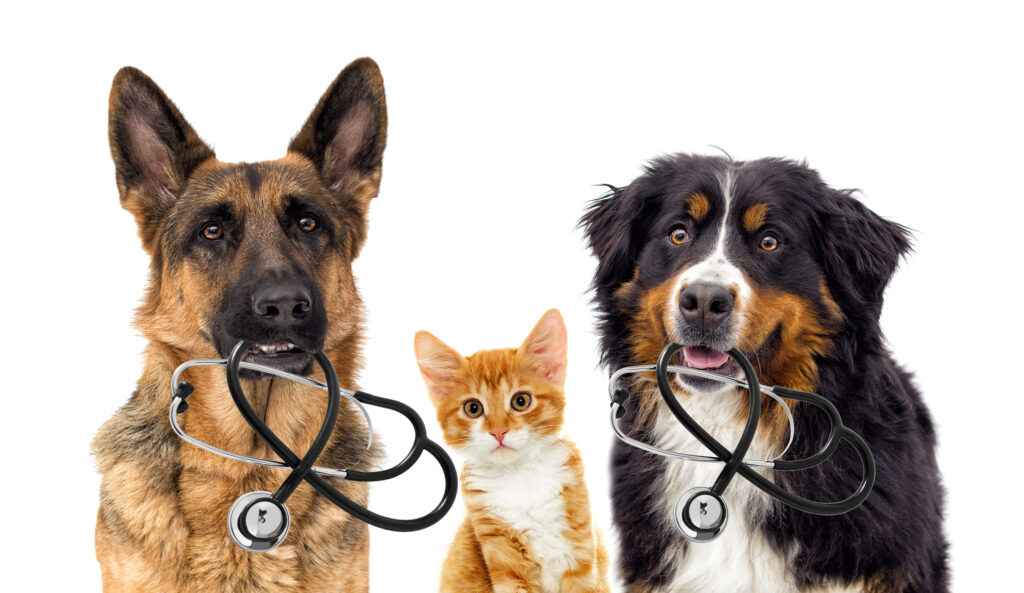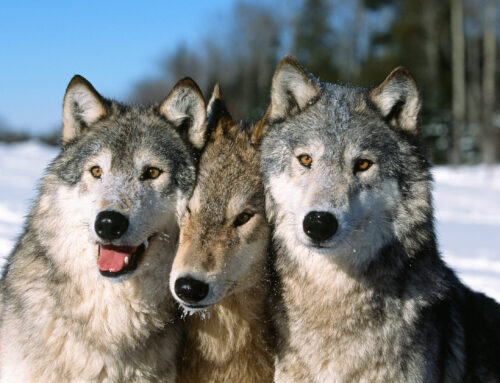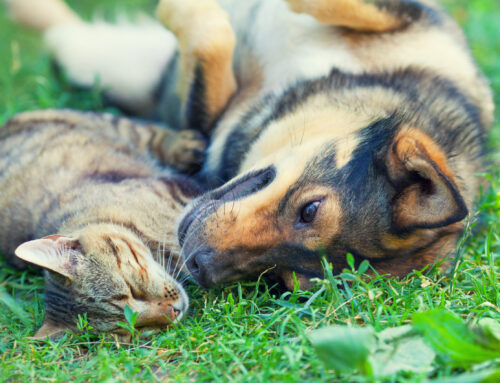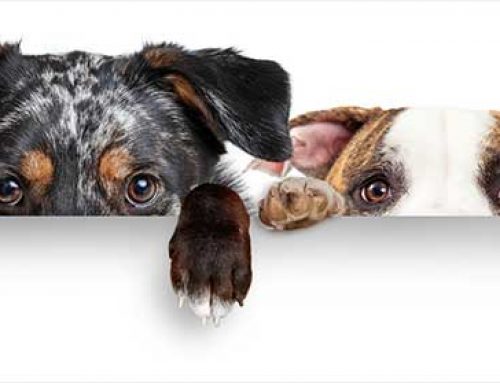G.O.M.E.R.

Get Out Of My Emergency Room
The acronym GOMER was coined by Dr. Samuel Shem in his medical satirical book House of God. It has a few meanings but essentially refers to a patient that has a long list of chronic illness that needs to be treated in places other than the ER.
When was the last time you had a conversation about vomiting and diarrhea? Did you know that about 60-70 percent of the cases seen in the emergency room are gastrointestinal related? The ER was once filled with trauma and mishaps and now it is filled with treating chronic illnesses. We spend our days triaging, diagnosing and treating so much of it, that we have essentially stopped asking why?
The Stuff Dogs Eat
Vomiting and diarrhea are non -specific symptoms of an underlying problem. Dogs eat things, and sometimes not the right things. They have a need to chew on things, tear on things, and play with things. It is in their nature. In olden days, from a lineage of wolves, they were the supreme scavengers and hunters. Very few of them today get to do just that, so they hunt and scavenge in the environment they know. They seek out with their highly sophisticated olfactory system, and enjoy things that most of us humans are disgusted by. Some of the highly attractive items are day old foods fermenting in the garbage, used panties, sweaty socks, shoes, furniture, toys, tissues, grasses, dirt and plants, a variety of small objects that inadvertently get in during the search, the small treats in the cat box, and not to mention to highly coveted used tampon.
Our dogs like these things. They eat them and sometimes they will throw them up or poop them out and sometimes they don’t. I had a dog presented to the ER whose weekly diet consisted of small socks that weren’t a problem because he just pooped them out- until one day he couldn’t. We took him to surgery to remove the socks and his intestines had evidence of chronic inflammation from years of strange things passing through. He was destined for more surgery if something didn’t change. Keep in mind multiple surgeries are hard on the dog not to mention the bank account; and on a side note, tampons rarely if ever pass through, so ladies please be careful.
Why Do Dogs Eat Strange Things?
There are a few answers to that question. The simplest and most direct answers are; One; it is in their nature, and Two; they are seeking something that is not being presented to them through their daily diet.
Diet is a highly controversial topic amongst veterinarians. There seems to be two teams of thought; the prescription diet team and the ancestral diet team. Without going into the long but very interesting history of how dog food came into existence, let’s look at the questions and statements that are made. The most common statements made by the veterinary community are: Never give your dog people food, feed him only this food (usually a prescription kibble) every day; and dry food is good for their teeth.
Dogs that live with humans are the only animals that eat the same food every day. That advice doesn’t make any sense, if you think about the ever changing dynamic of the dog’s body and the world around you, everything is constantly changing. The season’s change , the day changes, the weather changes ,nature changes, the moon goes through cycles, the tides change, a dog grows from a neonate to a puppy, to an adolescent, to an adult, to a senior and into a geriatric.
With all this changing going on how can it be that the source of the fuel that sustains that ever changing system stay the same? The answer is it can’t.
How Does Diet Affect Your Dog
The consequence of eating the same exact food every day is a gastrointestinal tract that becomes intolerant, inflamed and leaky. The “gut” and “gut health” has been a great topic of recent conversation; from the importance of the microbiome, to leaky gut syndrome or lack of intestinal cell wall integrity as a source of many chronic diseases such as skin allergies, and food intolerances to immune and inflammatory diseases like pancreatitis, diabetes, liver and gallbladder problems and even neurologic problems like seizures.
A common solution seems to be another type of a prescription diet to be fed, again, all the time, every day. And when it comes to alleviating the chronic vomiting and diarrhea conditions, a common recommendation is feeding a “novel” protein until eventually the dog is eating nothing but a “hydrolyzed protein with rice” diet. A hydrolyzed protein is a protein that has been broken down into its amino acid constituents.
This allows the inflamed and damaged “gut” to not have to work at processing and breaking down the food. The amino acids move through the “leaky gut wall” directly into the blood stream. This seems to work and it seems to help, which gives us a false sense of security.
The True Nature of the GI Tract
What we are forgetting, is the true nature and biological design of the gastrointestinal tract. From the sharp teeth with a hinged jaw designed for tearing, shearing and crushing; to the stomach filled with natural acids and enzymes to churn and break down foods; to the intestines equipped with micro-organisms and other constituents to aid in the further break down, digestion, assimilation and absorption of nutrients like amino acids, vitamins, minerals, electrolytes, fats, and carbohydrate metabolites; and then finally to the colon, filled with even more bacteria to help to absorb more nutrients, extract water, and sift out what the body doesn’t need and eliminate. This is what the gastro-intestinal tract was designed to do, and given the support it needs, it does an excellent job.
So, where did we go wrong? Why do so many dogs have “sensitive stomachs”, chronic allergies, food intolerances, inflammatory diseases, and chronic intermittent gastro- intestinal upset? It all ties back to what we are feeding our dogs. Although we can’t always help what they put in their mouths we do have control of what we put in their mouths.
Food is the Problem and the Solution
The kibble that we so love for its ease and convenience is a ticking time bomb for gut inflammation and mal- regulation. Kibble by definition it is a food product that is created by an extrusion and high heat process. Meaning all the water of the food is taken out and it is heated to over 400 degrees, and in the final stages, the fats, synthetic vitamins, and minerals are added on the outside as a coating.
The by- product of this is “food” is a substance that is devoid of moisture, natural enzymes, natural nutrients, and contains de-natured proteins with the formation of unintentional carcinogenic compounds that are created under high heat called heterocyclic amines and acrylamides; (these compounds are also found in many of the foods served at fast food restaurants). The chicken or salmon that started out looking like a bird or a fish is transformed into an artificially colored rock like “shelf stable” substance. The funny thing is, is that most people are fearful of feeding their dogs a piece of real chicken or real salmon because they were led to believe that it was not good for them.
Food in kibble form is not what our dogs were designed to eat, and it is not what their bodies were designed to process. Wait, but isn’t kibble good for their teeth?
That statement is made with the thought that the dryness of the food will act as a natural abrasive and “brush” the teeth. The truth is that most dogs don’t even “chew” the kibble and with the high carbohydrate ingredients, if they do, it is like brushing your teeth with a sugar cube.
The sugars get stuck to the teeth, the bacteria in the mouth love the sugar and the tartar grows. If we just stop and think about what we are being told we may realize that it just doesn’t make any sense.
But don’t get me wrong, I have met a 14 year old German Shorthaired Pointer that was in great condition with beautiful teeth, that actually spent his days running around assisting in bird hunting, doing what he was hardwired to do, that lived on Old Roy kibble. He was one of the outliers and I secretly believe he was eating some of the birds he was supposed to be retrieving.
Dogs Are Nutritionally Tolerant
The question is can our dogs survive on poor nutrition? Yes they can, dogs like humans are very nutritionally tolerant and it can take years for any smoldering conditions to show up. The question we have to ask is do I want my dog to survive or do I want him to thrive?
The food we put in our bodies and our dogs bodies is the difference between a thriving healthy system and a surviving system that has intermittent breakdowns.
In reference to my last article on Coherence, do you want your dog to be a Ferrari or a Jalopy and what type of fuel would you choose to put in it? We want the chronic wear and tear on the body to be from a lifetime of playing and the potential mishaps around unforeseen trauma and accidental ingestions, and not from the slow inner smoldering destruction of the gastro-intestinal tract leading to a host of inflammatory conditions.
In Conclusion
People say that feeding good nutrition is expensive, but the reality is you will pay for it either way; upfront in nutrition that can prevent illness or on the backend paying for treating chronic disease and subsequent visits to the ER; those of you that have experienced this know exactly what I am talking about.
The bottom line is nutritional flexibly is important, feed the gut what it was designed to process, feed a variety of healthy food sources, consult with a holistic veterinarian, don’t be a GOMER and stay out of the emergency room.
HEART FOCUSED BREATHING
Heart focused breathing is the essential first-step component for all other stress management techniques.HEART FOCUSED BREATHING
You can use it to reduce the intensity or turn down the volume of depleting emotions. It helps to establish a calm but alert state. You’ll be surprised how effective it can be if you use it mindfully in the heat of the moment.
First, focus your attention in the area of the heart.
Now, imagine your breath is flowing in and out of your heart or chest area, breathing a little slower and deeper than usual (suggested five seconds inhale, five seconds exhale).
Continue breathing for one minute.






